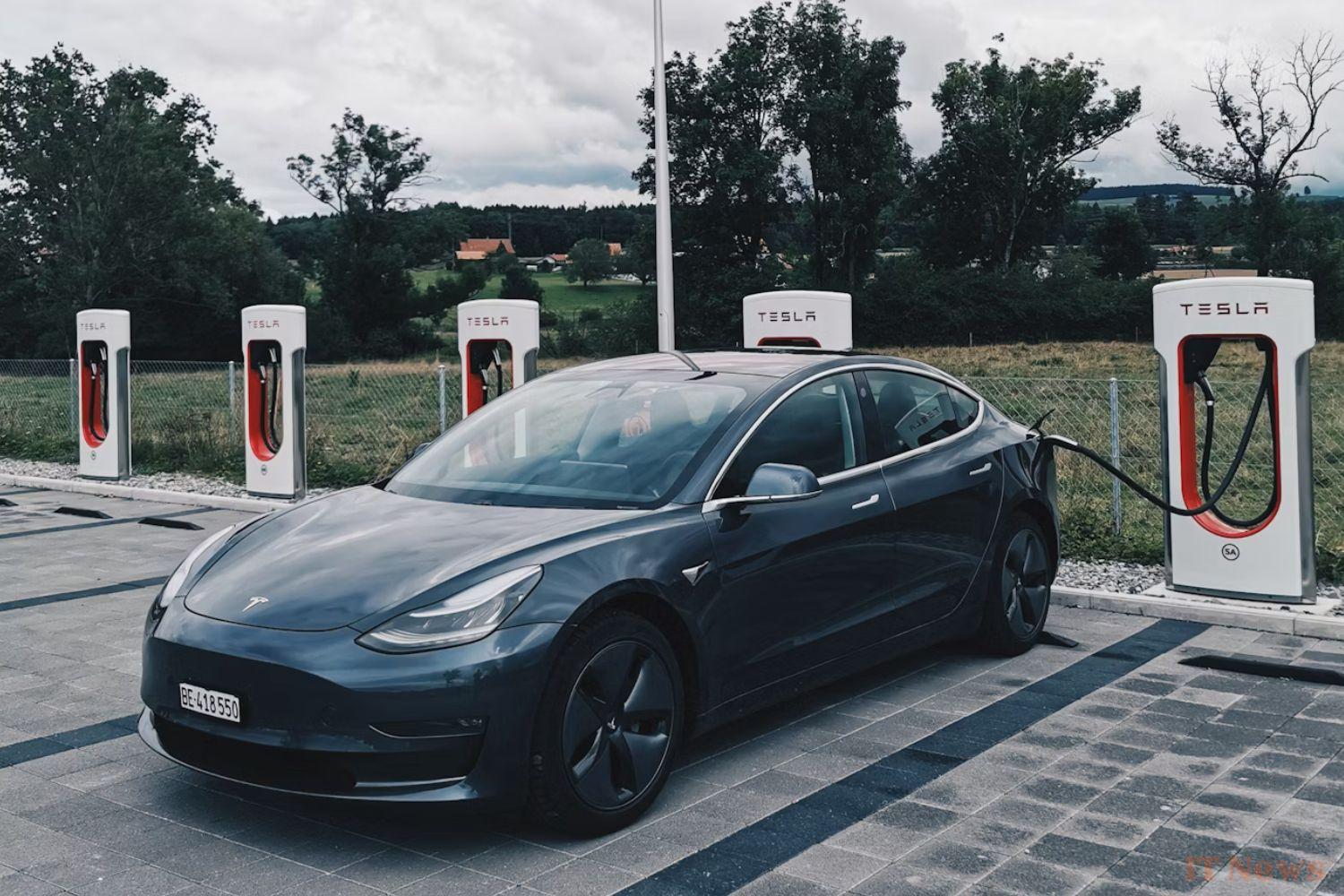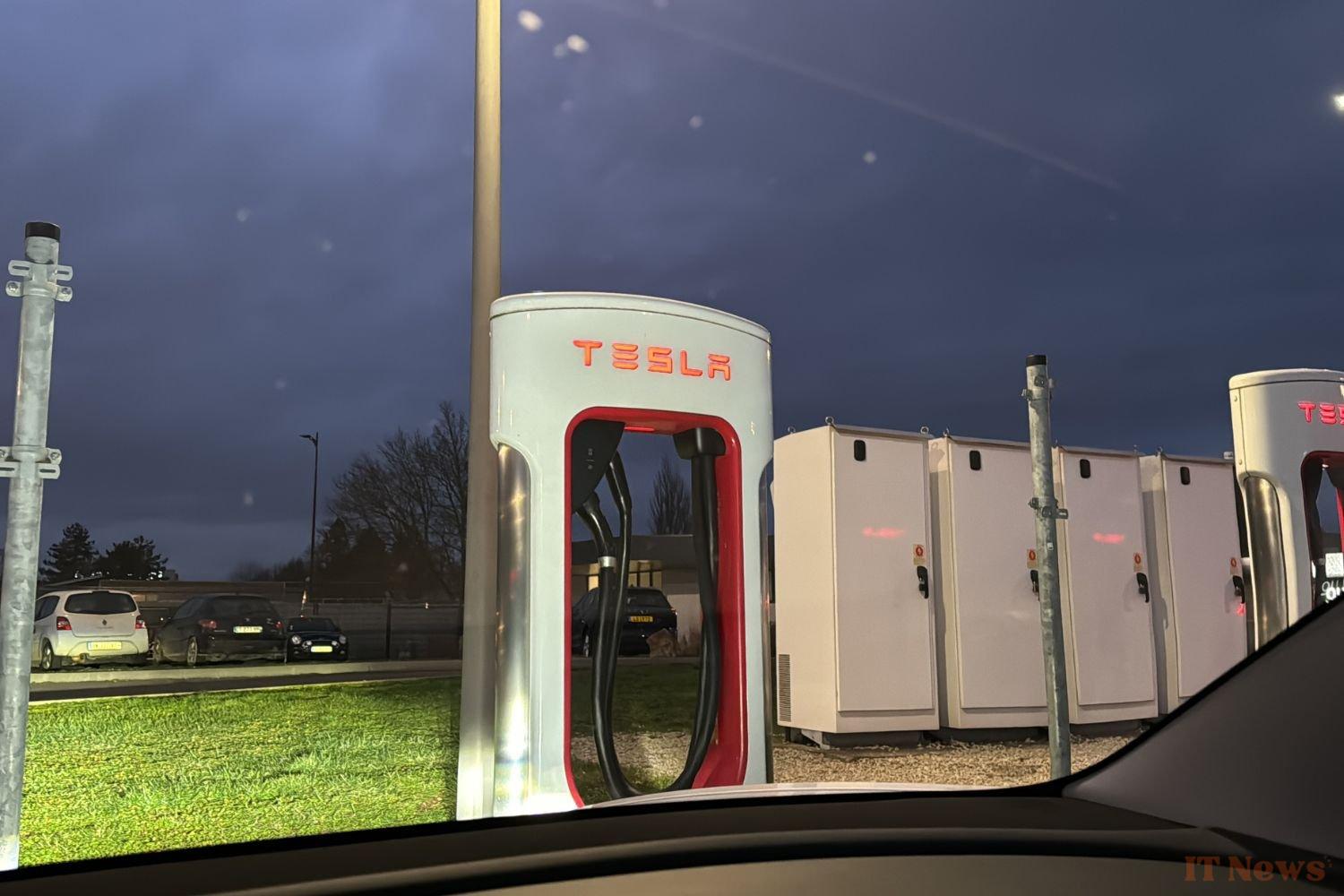Every winter, some Tesla owners panic when charging their electric car. While charging, the vehicle sometimes starts to generate smoke. Unsurprisingly, they fear that their car will catch fire. There are plenty of stories on social media.
Panic at Tesla Superchargers
In some cases, drivers even call the fire department. When they arrive, they realize it's a false alarm. In fact, the electric car isn't about to catch fire. The owner simply witnessed a common, but still relatively unknown, phenomenon.
The phenomenon is particularly visible when the mercury drops and the temperature approaches zero degrees. The smoke is especially noticeable when the Tesla is fast-charging, as is the case when it's plugged into a Supercharger. These charging stations offer high power, up to 250 kW for V3 Superchargers. They promise up to 275 km of additional range in just 15 minutes.
What really happens when a Tesla smokes?
In fact, the electric car doesn't emit smoke, but steam. As the YouTube channel EV FireSafe explains in a video from winter 2023, some of the brand's cars are equipped with heat pumps. This has been the case for Model Y since 2019 and Model 3 since 2021.
A heat pump allows Tesla to optimize the vehicle's thermal management, particularly to heat or cool the passenger compartment without consuming too much electricity. Using a pump helps preserve the car's range. In concrete terms, the pump recovers heat from internal components or the outside air to heat the interior and precondition the battery.
When temperatures are low, ice can form on the heat pump. Asked by EV FireSafe, Tesla explains that when the HVAC (Heating, Ventilation, and Air Conditioning) system is operating "in ambient air supply mode, the louvers are open, and the refrigerant suction and coolant temperatures drop below 0°C". In fact, "the humidity present in the ambient air then condenses and freezes on the surface of the radiator.".
During a fast charge, the battery temperature will skyrocket, which will melt the ice. In fact, the temperature rises even before the car is connected to the terminal, Tesla points out. Drivers pre-condition their batteries en route to a Supercharger, bringing them to between 32 and 42°C. These are most efficient when they are warm.
The "refrigerant and coolant suction temperature exceeds 0°C, causing the accumulated ice to melt and evaporate," Tesla emphasizes. This will turn into water vapor and escape through the Tesla's air vents. This phenomenon is amplified by certain variables, such as cold outside air. The steam is most visible at the front of the car, especially around the wheels, and under the frunk, the front trunk.
This phenomenon "is particularly noticeable when the radiator fan stops, which occurs when the HVAC system switches off from ambient air supply mode or when the high-voltage battery heater stops", which is the process used by electric vehicles, like Teslas, to bring the battery to an optimal temperature.
Tesla alerts drivers
As you may have gathered, this is absolutely no reason to panic. If you live in an area with harsh winter weather and you frequently visit Superchargers, you may regularly see steam escaping from your car. Aware of this, Tesla has started alerting drivers via the dashboard. A warning may appear on the touchscreen to inform drivers that the vapor is related to the pump's operation and that there is no danger of fire or explosion.
Note that the Tesla's owner's manual mentions the phenomenon, and assures that an "odorless vapor may escape from the front of the vehicle when charging at a Supercharger in cold weather", but that this "does not pose a risk". Tesla recommends verifying that your car is equipped with a heat pump by going to the dashboard, then Controls. Next, go to the Software section and then to Additional Information. If you have a heat pump, it's likely a steam emanation. Finally, note that the phenomenon is not limited to Tesla cars. Steam can also emanate from an electric car designed by another brand.




0 Comments